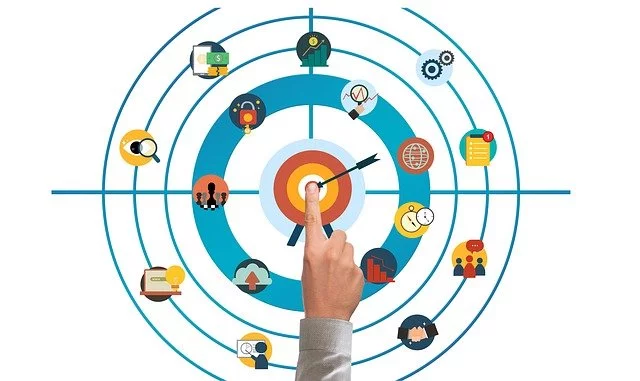How do I create content for SaaS?
Creating content for a SaaS company is different from creating other types of content. You need to follow specific steps and processes to create content that will help you achieve your marketing and sales goals. This guide will walk you through the entire process, from ideation to syndication. We’ll also provide tips on making your content stand out from the crowd. Let’s get started!
Why should you create content for SaaS?
What is your’ why?’ You need to know this before creating content for your SaaS company. Why are you doing it? What is the goal of your content marketing strategy? Are you looking to attract more leads, convert more customers, or increase brand awareness? Once you have determined your goals, you can create content that aligns with them and helps you achieve your desired outcomes.

The first step in creating great content is understanding what makes your product unique. Your product has a lot of features and benefits that make it special. This is why you created it in the first place.
If you don’t understand these things, it won’t be easy to communicate them to your audience.
Once you understand what makes your product unique, you can start creating content around it. This content should answer the question, “Why should I use your product?” It should also explain how your product is different from the competition and highlight its key benefits. You can do this yourself or get the help of a marketing agency with SaaS experience.
Idea Phase
The idea phase is an essential foundation for the success of your SaaS content creation process. This is when you decide which topics you want to cover and fit into your overall content strategy.
There are many ways to generate ideas for your content. Some people prefer brainstorming sessions where everyone pitches their ideas. Others like to write down all the ideas they come up with and then later choose the best ones. Either way works well if you’re willing to put some time into it.
You may find that you have a lot of ideas. If so, you might consider writing them down and prioritising them based on the value they bring to your business. For example, you could prioritise ideas by category (e.g., customer support, pricing) or by topic (e.g., user experience), or by integration (Shopify, Xero, Salesforce, AWS, Atlassian, etc you get the idea.
In addition to generating ideas, you can also ask yourself questions about your products and services.
For example:
“Who would benefit most from using my product?”
“Which features are most valuable to my users?”
“What problems does my product solve?”
“What are the biggest challenges facing my target market?”
After you’ve generated lots of ideas, you can move on to the next part of the process.
Selecting Topics
Now that you have a list of ideas, it’s time to select the best ones. Not every topic is worth writing about, so you need to be selective. This can be difficult because there are many potential topics to choose from. Remember that you only have limited resources (time and money), so you need to focus on the topics that will bring the most value to your business.

There are a few ways to select topics:
- Prioritise them based on their potential impact
- Choose the ones that are most relevant to your audience
- Go with the ideas that you’re most excited about writing about
Once you’ve selected a topic, it’s time to do some research.
Researching Your Topic
Before you start writing, it’s essential to do your research. This will help you understand the topic better and ensure your content is accurate and informative. It will also help you develop ideas for additional content that can support your main topic.
There are many ways to conduct research. Keyword research is vital if your content will be organically syndicated. It helps you figure out what your audience is searching for. Matching your selected topics to how the audience is searching for them is one way to ensure that your content gets found. You can also use tools such as Google Trends to see what keywords are currently popular in your industry. Organic traffic is a great way to get your target audience onto your website.

SaaS SEO is similar to others in that match search intent usually leads to a good ranking. It also helps if you understand search intent. What is the user looking for when they type these words into Google Search? Is our piece of content delivering that?
Another great way to get started researching your topic is to talk to customers. Ask them about what they love and hate about your product or service. What are the top issues they encounter? How do they feel about your company? These are just a couple of examples of questions you can ask.
If you don’t have any customers yet, you can still find answers through online forums, social media sites, and other sources.
When you have enough information, it’s time to draft your first piece of content.
Content Goals
With Saas, as with other things, you cannot create content for the sake of it. Your content should be attached to some S.M.A.R.T goals. SMART stands for Specific, Measurable, Achievable, Relevant, and Time-bound.
For example, one of your goals might be to increase website traffic by 20% in the next three months. Or you might want to generate 1,000 leads from your content in the next 12 months.
Be sure to attach a specific metric to each goal so you can track and measure your progress. Connecting some goals to your content helps determine the volume and frequency of content production based on your desired outcomes.
Another way to look at content goals is to consider what outcomes you want your customers to have. Are you creating content to inform, educate, convert or something else? You can do all of these with various pieces of content.
The key is to know what you want before you start content production.
Brand Complementing Content
This content does not complement our brand! That is a sentence that content agencies don’t want to hear from their clients. This would indicate a failure earlier in the process. The content ideation phase should always consider the brand in question. Content is a vital part of any inbound marketing strategy, and while it’s essential to produce content that supports your brand, you don’t want to be too self-promoting. You also want to provide value for your audience.
That’s why it’s essential to mix up the types of content you produce. We will explore this in a little more detail later in this post.
Complementing the brand is not confined to the type of content you produce. It is more important to define, understand, and maintain the brand’s ” voice “. Your content should adhere to a specific editorial guideline regardless of who created it. This may mean having one or a team of editors to finalise things before publishing.

You can also take advantage of different platforms to publish content. For instance, you could write an article on Medium and then republish it on your blog. This allows you to reach a wider audience with fewer resources.
In addition to the above, many other factors go into producing quality content. Some of them include:
• Quality over Quantity – Don’t try to create thousands of articles. Instead, focus on creating high-quality content that provides value to your readers.
• Focus on topics that matter – While you may think that every topic matters, most people only care about a few. So, make sure you pick those topics wisely.
• Keep it short – People hate reading long posts. Make sure your content is concise and easy to read.
• Be consistent – Consistency is the best form of repetition. Your readers will come back for more if you consistently post good content.
• Create great headlines – Headlines are like banners that catch attention. They need to grab readers’ attention immediately.
• Use images – Images help convey information quickly. They are often used as visual aids when writing.
• Include links – Links allow users to easily jump around within your site. They also increase the chances of getting found by search engines.
• Provide value – Value means providing helpful information that solves problems. Without solving problems, no one will use your product or service.
Customer Focused
Your content is not about you. It is for the benefit of current and potential customers. Remembering this will serve you well. It removes the emotion often attached to topics and pieces of content. Understanding that the customer is the only one your content MUST serve will deliver good outcomes for any SaaS business. You can start by exploring what your customers need based on the feedback that they have provided.
- What is the most common question that they ask?
- What features do they not know how to use?
- What features do they not know to exist?
- What could help them make the most of your SaaS product/service?
Basing your content on solving the queries above will improve user satisfaction and ultimately lead to better customer acquisition. There is nothing that converts better than word of mouth. And if you want to be successful in the SaaS space, you must provide excellent customer support. You cannot expect your users to recommend your products without giving them all the necessary tools to succeed. Sales teams and customer support personnel are the best to provide this information, now onto the actual content.
Customer Journey
Once you have brainstormed your content ideas, ensured the topics are SEO-ready and customer-focused, the last thing you want to do is to ensure your content matches the stage of your customer in their journey.
For example, you want to create awareness stage content, consideration stage and decision stage content.
Request the content mapping template.
Text
Text content can be in blog posts, ebooks, guides, infographics, etc. The text content is usually easier to produce than other content types because it doesn’t require as much effort. However, text content involves a lot of time to craft. It can be used as the foundation of all of your content. Your writers need to understand that their content should have enough value to succeed when converted to other content types. We will look at that in the content reuse section below.
Quality content is not only well researched and customer-focused, but it must also be typo-free easy to read and follow. This may seem like an obvious point, but many businesses make the mistake of overlooking this detail.
Video
Video content is the fastest-growing type of content in the world. Platforms such as Tik Tok, Instagram, YouTube and Snapchat collectively generate more traffic than traditional search engines like Google and Bing. Some of these platforms are still in their infancy, which presents an excellent opportunity for businesses to grow an audience. Creating videos that provide value will lead to a somewhat qualified audience following your brand on these platforms.
This is a great place to convert viewers into brand evangelists. They may not be at the right stage in the sales cycle to make a purchase, but they become aware of YOUR BRAND, SOLUTIONS and PRODUCTS. You do not have to be a professional scriptwriter to do this. You can reuse your written content, repurposing it as the basis of your video scripts.
Content Reuse
What if you could turn your blog post into an infographic for Pinterest, several images for Instagram and a video for the platforms we discussed above? Not only does this save you time, but it gives you a better ROI on your content. It works just as well for SaaS products and services. Big marketing names such as Gary Vaynerchuk and Russell Branson use this strategy.

The writing process and research should be top tier. It should create valuable content. This makes it easier for graphic designers and videographers to find sound bytes to quote. You can turn this into great infographics if you can collect original data. These will encourage users within the industry to share and attract organic backlinks.
You can stretch the same content further to anchor additional content types such as podcasts. To successfully run a content reusing campaign, a content calendar must be adhered to. It would help if you delegated responsibility to the right people in your content team. You can use project management platforms such as Trello, Asana or ClickUp to manage everything centrally.
Funnel + Drip Feed
A wholesome content marketing plan takes over when the content pieces are ready. Seeing as we have created valuable content in different forms, the next step is to get it in front of your target customers. Content distribution Organic search is one of the most consistent ways. It ensures that each search engine ranks your content for search terms related to our earlier ideas. Our content strategy includes building an email list right from the start. Once you have your target audience on your platform, you want to get their email address and place them in the sales funnel no matter where they are in their customer journey.
Funnel Content
Funnel content is created to take buyer personas through their buyer journey. Email subscribers do not like to receive too many sales pitches. This is why it is essential to use your content marketing efforts to add value. Most people’s buying decision is influenced by how much they trust you as an expert in the field. Good SaaS content leaves no doubt. It meets users at various touchpoints with relevant content. What problems do they currently have? What reservation might they have for buying your software?
Product Centred Content
Product centred content comes into play during the awareness phase. Once the customer knows that they have a problem and you have a solution, it is time to build a bridge between the two. This can be effectively syndicated through social media channels or pages to find a ready audience.
Content upgrades
As your product develops, so should your content. It would be best if you did content upgrades to keep up with what you are offering. They can be a powerful tool to educate users of new features or encourage others that may still be on the fence.
Educational content
Educational content is used to teach users about the product. It can include videos, case studies, guides, tutorials, etc. Educational content is usually more complex than other types of content because it requires technical knowledge. However, educational content can be very effective if executed correctly.
Case Studies
Case studies are excellent examples of how a user would benefit from your product. Case studies show real-life scenarios of how someone used your product. They are typically written in third person narrative form. An excellent example of a case study could be “How Our SaaS Product Help Business X solve [INSERT COMMON PROBLEM]“.
Guides
Guides are great tools to help users learn how to use your product. They are often broken down into sections such as Getting Started, How To Use, Troubleshooting, etc. These guides are helpful for both novice and advanced users. For instance, you can publish guides like “5 Tips for Speeding up your process with our SaaS product.”
Tutorials
Tutorials are similar to guides but are shorter in length. They tend to focus on specific tasks within your product. An example of a tutorial could be “How to Set Upload user data through our portal”. These are usually not targeted at prospective customers but may also be helpful when trying to convert them. They can find out how your product solves their problem.
Content Clusters
You can use content clusters to establish yourself as an expert in one area quickly. This is a good part of the content marketing strategy. Content clusters feature specific content that covers all aspects of a topic. This can help you rank for competitive keywords and drive more organic search visitors to your site when done well.
Conclusion
Your ideal customers can usually sniff out a worthless sales pitch. Your content marketing efforts are wasted if the content does not positively influence the user’s purchase decision. The sales cycle will vary. It may take several months to get them over the line. Combining SEO strategies and some paid reach through Google Ads will keep you on the customer’s radar until they are ready to purchase. Good content will improve your conversion rate. So, don’t just throw any old content at your target market. Make sure it is quality content that helps you achieve your goals.
